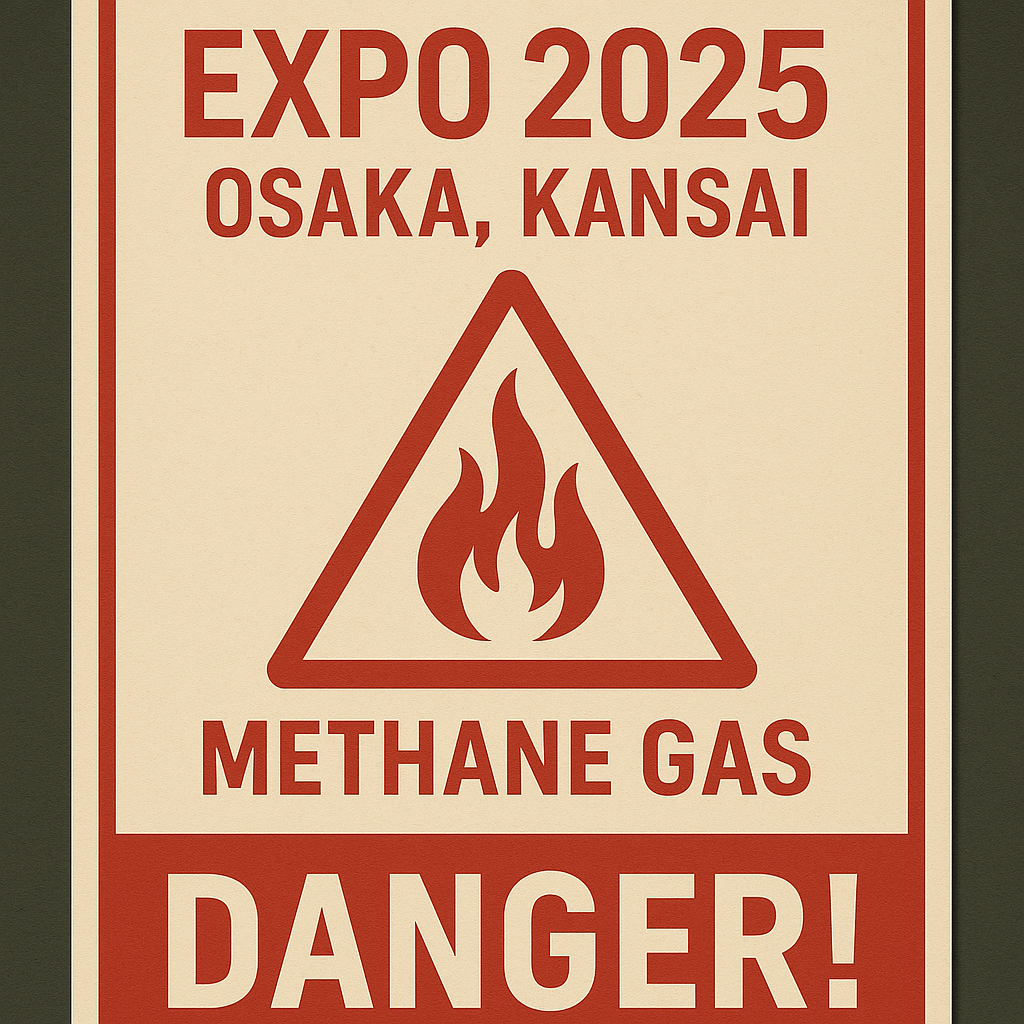Introduction
Expo 2025 Osaka, Kansai, is set to be one of the most ambitious global events of the decade, bringing together innovation, culture, and sustainability under the theme “Designing Future Society for Our Lives.” However, beneath the promise of futuristic pavilions and international cooperation lies a pressing environmental and safety issue—methane gas accumulation at the Expo venue on Yumeshima Island, an artificial island in Osaka Bay.
The Source of the Problem: Yumeshima’s Landfill History
Yumeshima, the site chosen for the Expo, is a reclaimed landfill area. For decades, this artificial island has been filled with various types of waste, including organic matter. As a result, the decomposition of this waste continues to generate methane gas (CH₄)—a highly flammable and potent greenhouse gas.
Methane is naturally formed through anaerobic microbial activity in organic waste. In Yumeshima’s case, the gas is trapped underground and can potentially accumulate in closed spaces, creating an explosion hazard if ignited.
Explosion Incident Raises Alarms
In March 2024, a methane gas explosion occurred at a restroom construction site within the Green World zone of the Expo area. Welding operations in a poorly ventilated underground pipe area led to a sudden ignition, causing a fire. Although no one was injured, the incident raised serious concerns about the safety protocols in place.
In a follow-up investigation, methane gas levels exceeding the Lower Explosive Limit (LEL) were found in several locations, particularly underground spaces such as inspection pits and manholes.
Safety Measures Implemented by the Organizers
The Japan Association for the 2025 World Exposition and construction authorities responded with a set of comprehensive countermeasures:
• Forced Mechanical Ventilation: Installation of mechanical ventilation systems in all enclosed underground areas.
• Gas Detectors: Deployment of methane gas sensors to monitor real-time levels.
• Perforated Manhole Covers: Modifications to existing infrastructure to allow passive ventilation.
• Monitoring Protocols: Regular on-site gas concentration checks, with emergency protocols if concentrations exceed 1%.
Furthermore, detailed safety guidelines were distributed to all workers, and construction schedules were adjusted to minimize welding or electrical work in high-risk zones.
Recent Developments and Public Concerns
Despite countermeasures, on April 6, 2025, another detection of methane above the LEL occurred. While there was no explosion, the area had to be temporarily closed and ventilated. These repeated incidents have sparked criticism from environmental groups and urban safety experts.
Citizens and local media are now questioning whether Yumeshima was a viable choice for such a high-profile event, especially considering long-known risks from its landfill origins.
Environmental Implications
Beyond the explosion risk, methane is one of the most significant greenhouse gases, with a global warming potential 25 times greater than CO₂ over a 100-year period. Although the gas levels at Yumeshima are not considered dangerous from a climate perspective, the Expo’s stated goals of sustainability are being challenged by this contradiction.
Conclusion
Expo 2025 Osaka represents a bold step toward a more sustainable and interconnected future. Yet, the ongoing methane issue serves as a reminder of the hidden costs of land reclamation and urban development. Transparency, strong safety enforcement, and public engagement will be key in ensuring that this global celebration does not end in controversy or disaster.


